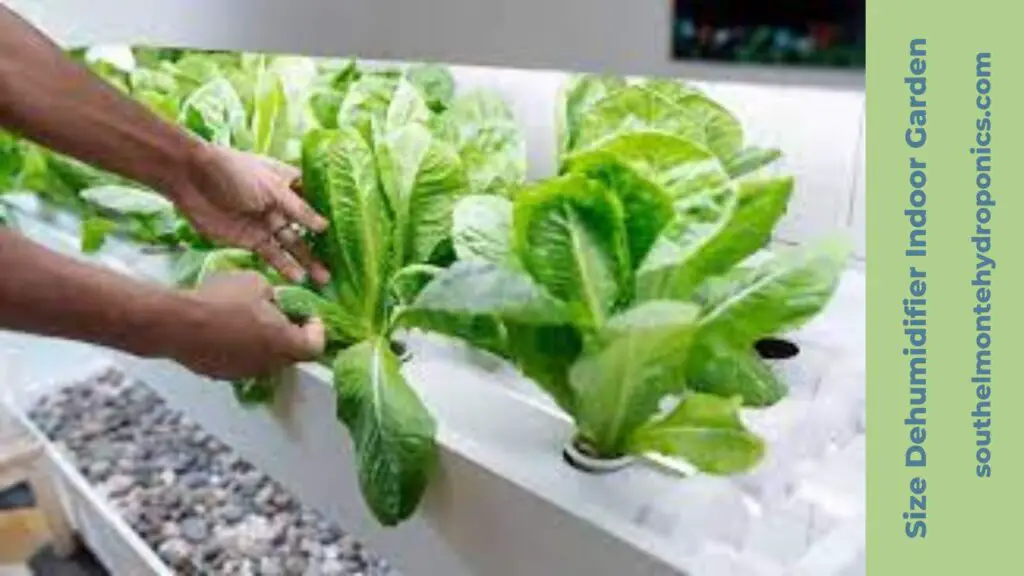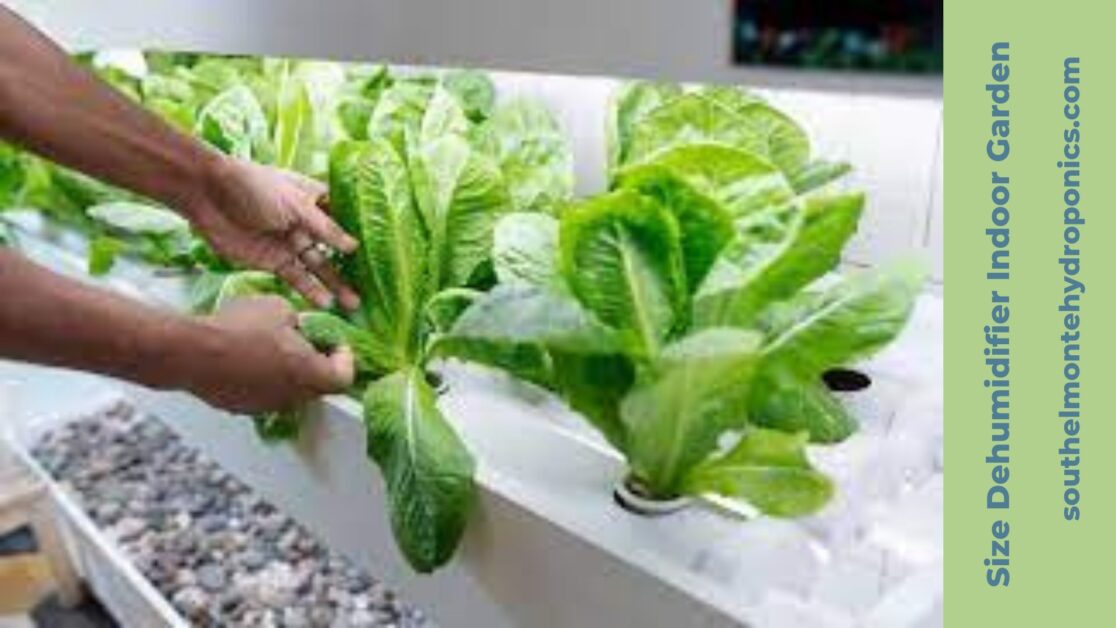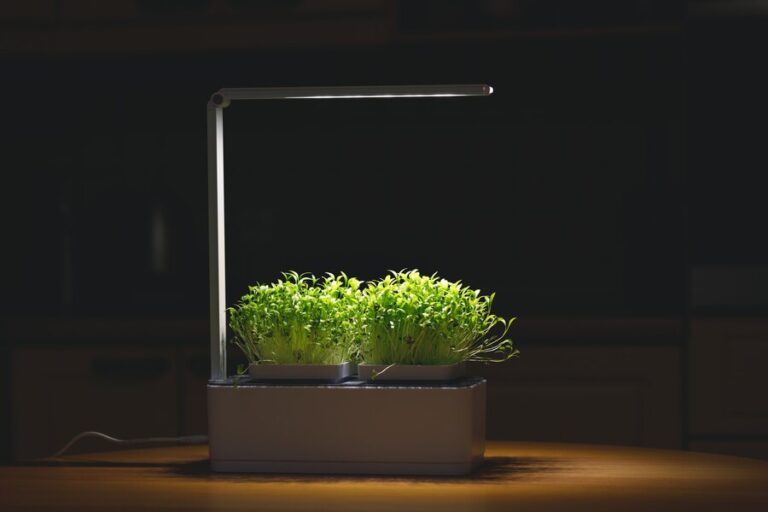the best Size Dehumidifier Indoor Garden: The Best way to Choose the Right Dehumidifier for Your Grow Room
Table of Contents
Understanding the Importance of Dehumidification in Indoor Gardening: the best Size Dehumidifier Indoor Garden

Maintaining the proper humidity levels is crucial for the success of indoor gardening. The humidity in your grow room affects not only the health and growth of your plants but also the overall environment. Excess moisture can lead to a host of problems such as mold and mildew growth, nutrient imbalances, and pest infestations. On the other hand, insufficient humidity can cause stunted growth, wilting, and a weakened immune system in plants. By understanding the importance of dehumidification in indoor gardening, you can create an optimal environment for your plants to thrive.
Controlling humidity levels in a grow room is essential because it allows you to have greater control over your plants’ growth conditions. Different stages of plant growth require different humidity levels, and by adjusting the humidity, you can replicate the ideal conditions for each stage. For example, during the vegetative stage, plants typically thrive with a higher humidity level, while during the flowering stage, a lower humidity level is preferred. In addition to influencing plant growth and development, dehumidification also helps prevent the spread of diseases and pests. Excessive moisture promotes the growth of pathogens and pests, which can quickly wreak havoc on your plants. By utilizing the right dehumidification techniques and equipment, you can create an environment that discourages the development and proliferation of these unwanted intruders.
Size Dehumidifier Indoor Garden: Factors to Consider When Choosing a Dehumidifier for Your Grow Room
When it comes to indoor gardening, maintaining the right level of humidity is crucial for the health and success of your plants. A dehumidifier can be a valuable tool in achieving optimal humidity levels in your grow room. However, there are several factors to consider when choosing the right dehumidifier for your specific needs.
First and foremost, you need to assess the size and layout of your indoor garden. The size of your grow room will determine the capacity of the dehumidifier you need. It’s important to choose a dehumidifier that can effectively cover the entire space and remove excess moisture. Additionally, consider the layout of your grow room and how the air circulates within it. This will help you determine where to place the dehumidifier for maximum efficiency.
Assessing the Size and Layout of Your Indoor Garden
Assessing the size and layout of your indoor garden is an essential step in creating a successful environment for your plants to thrive. The size of your grow room will determine how many plants you can accommodate, as well as the type of equipment you will need. Consider the available space and decide on the number of plants you wish to cultivate. Adequate spacing between plants is crucial to prevent overcrowding, which can lead to poor air circulation and the risk of disease. Additionally, take into account any functional areas you may need, such as a propagation station or a separate space for drying and curing.
The layout of your indoor garden should be carefully planned to optimize the efficiency of your space. Consider the placement of light fixtures, ventilation systems, and other essential equipment. It is crucial to position the lights at an optimal height and angle to ensure the plants receive adequate light coverage. Pay attention to the placement of fans and air circulation devices to promote proper airflow throughout the grow room. Additionally, consider the accessibility of your plants for maintenance tasks such as pruning, watering, and harvesting. By carefully assessing the size and layout of your indoor garden, you can create an environment that maximizes plant growth and ensures a successful harvest.
Calculating the Ideal Dehumidifier Capacity for Your Grow Room
When it comes to indoor gardening, maintaining the right humidity level is crucial for the health and growth of your plants. Too much moisture in the air can lead to mold, mildew, and other issues, while too little can cause dehydration and stunted growth. That’s where a dehumidifier comes in handy, as it helps regulate the moisture in your grow room.
To calculate the ideal dehumidifier capacity for your grow room, you need to consider several factors. First and foremost, determine the size of your grow room in square footage. The larger the space, the more powerful the dehumidifier will need to be. Additionally, take into account the temperature and humidity levels in your specific area. Different regions have different climate conditions, so it’s important to account for your local environment when selecting a dehumidifier. By understanding these factors, you can find the right dehumidifier capacity to effectively control humidity levels in your indoor garden and create an optimal growing environment for your plants.
Evaluating the Humidity Levels in Your Indoor Garden
Maintaining the optimal humidity levels in your indoor garden is crucial for the successful growth of your plants. Excess moisture can lead to the growth of mold and fungi, while insufficient humidity can cause your plants to dry out and wither. Therefore, it is essential to regularly evaluate and monitor the humidity levels in your indoor garden to ensure a healthy and thriving environment for your plants.
One way to assess the humidity levels is by using a hygrometer, a device specifically designed to measure humidity. Place the hygrometer at plant height and away from any sources of moisture or direct sunlight. Leave it in the garden for at least a few hours to get an accurate reading. The optimal humidity levels for most indoor plants typically range between 40% and 60%. However, certain plants may have specific humidity requirements, so it’s important to research the needs of your specific plant species. By regularly evaluating the humidity levels in your indoor garden, you can make necessary adjustments to maintain an ideal environment for your plants’ growth and overall health.
Here’s a basic table outlining considerations for choosing the Best Size Dehumidifier Indoor Garden:
| Aspect | Consideration |
|---|---|
| Room Size | Select a dehumidifier with a capacity suitable for the size of your indoor garden space. |
| Pints Per Day (PPD) | Determine the dehumidifier’s PPD rating, which indicates how much moisture it can remove in a day. |
| Humidity Level | Consider the current and target humidity levels. Choose a dehumidifier that can handle the required reduction. |
| Plant Stage | Different plant stages (seedling, vegetative, flowering) may have varying humidity needs. Adjust the dehumidifier size accordingly. |
| Temperature | Check if the dehumidifier operates effectively within the temperature range of your indoor garden. |
| Water Drainage Options | Decide between manual emptying or continuous drainage options based on your preferences and convenience. |
| Energy Efficiency | Look for an energy-efficient model to minimize operational costs, especially for long-term use. |
| Noise Level | Consider the noise level if your indoor garden is in a living space. Choose a dehumidifier with acceptable noise levels. |
| Portability | Assess whether you need a portable dehumidifier that can be easily moved around the indoor garden area. |
| Brand and Reviews | Research and choose reputable brands with positive reviews to ensure reliability and performance. |
Keep in mind that the specific requirements may vary based on the size of your indoor garden, the number of plants, and the environmental conditions. Always refer to the manufacturer’s specifications and guidelines for the most accurate information.
Identifying Potential Sources of Excess Moisture in Your Grow Room: The Best Size Dehumidifier Indoor Garden
Excess moisture in a grow room can be detrimental to the health and growth of your plants. Identifying the potential sources of this moisture is crucial in maintaining an optimal environment for your indoor garden. One common culprit is poor ventilation. When the air inside the grow room becomes stagnant, humidity levels can skyrocket. This can be caused by a lack of air exchange, inadequate exhaust fans, or blocked air vents. Keeping your ventilation system in good working condition and ensuring proper air circulation will help prevent excessive moisture buildup.
Another potential source of excess moisture is overwatering. While it may seem counterintuitive, too much water can actually lead to increased humidity levels in the grow room. When plants are overwatered, they are unable to absorb all of the moisture from the soil, resulting in excess water evaporating into the air. It is important to strike a balance when watering your plants, allowing the soil to dry out slightly between waterings. Additionally, using well-draining soil and pots with good drainage can help prevent waterlogging and subsequent humidity issues.
Exploring Different Types of Dehumidifiers for Indoor Gardens: Best Size Dehumidifier Indoor Garden
When it comes to indoor gardening, humidity control plays a crucial role in maintaining the optimal growing conditions for plants. As such, choosing the right type of dehumidifier for your indoor garden is essential. There are several different types of dehumidifiers available in the market, each with its own unique features and benefits.
One popular option is the refrigeration dehumidifier. This type of dehumidifier works by cooling the air, causing moisture to condense and collect in a reservoir. Refrigeration dehumidifiers are known for their effectiveness in removing excess moisture from the air, making them a reliable choice for indoor gardens.
Another type of dehumidifier commonly used in indoor gardening is the desiccant dehumidifier. Unlike refrigeration dehumidifiers, desiccant dehumidifiers work by absorbing moisture using a desiccant material such as silica gel. These dehumidifiers are often preferred for colder climates or when lower humidity levels are required.
Additionally, there are hybrid dehumidifiers available that combine both refrigeration and desiccant technology, providing a versatile solution for indoor gardeners. These hybrid dehumidifiers offer the benefits of both types, allowing for efficient and customizable humidity control.
As you explore different types of dehumidifiers for your indoor garden, it’s important to assess your specific needs and requirements. Consider factors such as your garden’s size, humidity levels, and the presence of any potential moisture sources. By choosing the right dehumidifier, you can create an ideal environment for your plants to thrive and ensure a successful indoor gardening experience.
Comparing Portable and Whole House Dehumidifiers for Grow Rooms
Portable dehumidifiers and whole house dehumidifiers are both viable options for controlling moisture levels in grow rooms. However, there are some important differences to consider when deciding which type is best for your indoor garden.
Portable dehumidifiers are typically smaller in size and designed to be moved around as needed. They offer a more flexible solution, allowing growers to target specific areas or plants that may require extra moisture control. These dehumidifiers are also generally more affordable and easier to install, making them a popular choice for smaller gardens or hobbyist growers.
On the other hand, whole house dehumidifiers are larger in size and designed to be integrated into the HVAC system of a home or building. They are capable of dehumidifying an entire space, making them ideal for large-scale commercial gardens or growers who have multiple grow rooms. While whole house dehumidifiers may require professional installation and be more expensive upfront, they offer the advantage of centralized control and reduced maintenance as they are designed for continuous operation.
In conclusion, when comparing portable and whole house dehumidifiers for grow rooms, it’s important to consider the specific needs of your indoor garden. If you have a small or medium-sized garden and want flexibility in controlling moisture levels, a portable dehumidifier may be suitable. However, if you have a larger garden or multiple grow rooms and prefer a more centralized and automated solution, a whole house dehumidifier may be a better option. Ultimately, the choice will depend on factors such as garden size, budget, and desired level of control.
Energy Efficiency: Finding a Dehumidifier to Save on Electricity Costs

In today’s environmentally conscious world, finding ways to save on electricity costs is a top priority for many indoor gardeners. When it comes to dehumidifiers, choosing an energy-efficient model can make a significant difference in reducing your electricity bill. Energy-efficient dehumidifiers are designed to use less power while effectively removing excess moisture from your grow room.
One important factor to consider when evaluating the energy efficiency of a dehumidifier is its Energy Star certification. The Energy Star label indicates that the appliance meets strict guidelines set by the U.S. Environmental Protection Agency (EPA) for energy efficiency. Energy Star dehumidifiers use approximately 15% less energy than conventional models, resulting in significant electricity savings over time.
In addition to Energy Star certification, look for dehumidifiers with features that further enhance energy efficiency. For example, some dehumidifiers come with programmable timers that allow you to schedule operation during specific times when humidity levels tend to be higher. This targeted approach can help optimize energy usage and minimize wastage. Moreover, models with auto-shutoff functions can automatically turn off the dehumidifier once the desired humidity level is reached, preventing unnecessary energy consumption.
By selecting an energy-efficient dehumidifier for your grow room, you not only contribute to a greener environment but also save on electricity costs in the long run. With the multitude of options available on the market, it’s essential to carefully consider the energy efficiency features of each dehumidifier before making your purchase.
Noise Considerations: Selecting a Quiet Dehumidifier for Your Grow Room
When it comes to maintaining a quiet and peaceful environment in your grow room, considering the noise level of your dehumidifier is crucial. Traditional dehumidifiers can produce a significant amount of noise, which can be disruptive to both you and your plants. However, advancements in technology have led to the development of quiet dehumidifiers specifically designed for indoor gardening.
These quiet dehumidifiers utilize innovative features such as noise reduction technology and advanced fan systems to operate at a whisper-quiet level. By selecting a quiet dehumidifier for your grow room, you can ensure that your plants can flourish in a tranquil environment while also minimizing any disturbances to your daily activities. Remember that excessive noise can impact the overall well-being and growth of your plants, making it essential to prioritize a peaceful environment in your indoor garden. So, let’s explore some important factors to consider when selecting a quiet dehumidifier for your grow room.
Maintenance and Upkeep: Tips for Keeping Your Best Size Dehumidifier Indoor Garden
Regular maintenance and proper upkeep are essential for ensuring that your dehumidifier functions optimally in your grow room. By following these simple tips, you can prolong the lifespan of your equipment and maintain the desired humidity levels for your indoor garden.
First and foremost, it is crucial to clean your dehumidifier regularly. Dust, debris, and other particles can accumulate on the filters, vents, and coils, hindering the unit’s efficiency. Be sure to refer to the manufacturer’s instructions for specific cleaning guidelines. Generally, it involves gently vacuuming or rinsing the filters, wiping down the exterior, and removing any obstructions from the intake and exhaust vents.
Additionally, keep an eye on the water collection tank or drainage system. Depending on the type of dehumidifier you have, you may need to empty the tank manually or ensure that the drainage hose remains unobstructed. Standing water can become a breeding ground for bacteria and mold, compromising the air quality in your grow room. Regularly check and clean the tank or drainage system to prevent such issues.
Lastly, consider the location of your dehumidifier. It is recommended to place the unit slightly elevated off the ground to avoid moisture damage. Furthermore, ensure that the surrounding area is free from clutter and obstacles that could restrict airflow or interfere with the unit’s functioning. This includes keeping a safe distance from walls, furniture, or other objects that may block proper air circulation.
By adhering to these maintenance and upkeep practices, you can maximize the efficiency and longevity of your dehumidifier, allowing it to effectively control humidity levels in your grow room. Remember, a well-maintained dehumidifier is an investment in the health and productivity of your indoor garden.
Additional Features to Look for in a Dehumidifier for Indoor Gardening: The Best Size Dehumidifier Indoor Garden
When it comes to selecting a dehumidifier for your indoor garden, there are several additional features that you should consider. These features can enhance the efficiency and effectiveness of the dehumidifier, making it a valuable tool in maintaining optimal conditions for your plants.
One important feature to look for is a built-in humidistat. This allows the dehumidifier to automatically monitor the humidity levels in your grow room and adjust its settings accordingly. By maintaining a consistent humidity level, your plants will be able to thrive and grow without the risk of over- or under-watering. Additionally, some dehumidifiers offer programmable settings, allowing you to set specific humidity ranges and schedule operation times to match the needs of your plants. This level of customization ensures that your indoor garden remains in the ideal environment for growth.
Expert Recommendations: The Best Size Dehumidifier Indoor Garden
When it comes to choosing the best dehumidifier brand for your grow room, it’s essential to consider several factors. After conducting extensive research and evaluating various options, we have identified two top dehumidifier brands that consistently meet the needs of indoor gardeners: Brand X and Brand Y.
Brand X has earned a reputation for its high-quality dehumidifiers that effectively control moisture levels in grow rooms. Their products are known for their durability, efficiency, and user-friendly features. With a range of capacities available, Brand X offers options suitable for both small and large indoor gardens. Additionally, their dehumidifiers are equipped with advanced technologies to ensure optimal performance and long-term reliability.
On the other hand, Brand Y stands out for its commitment to innovation and sustainability. Their dehumidifiers are designed with eco-friendly features that minimize energy consumption without compromising performance. Gardeners can choose from a variety of models that cater to different grow room sizes and humidity requirements. Brand Y’s dehumidifiers also come with intelligent controls, making it easy to monitor and adjust humidity levels for optimal plant growth.
Both Brand X and Brand Y have received positive reviews from experienced growers, highlighting their effectiveness in maintaining ideal humidity levels. Consider your specific needs, budget, and grow room size when selecting a dehumidifier brand, and rest assured that both Brand X and Brand Y offer reliable choices for your indoor gardening endeavors.
The Best Size Dehumidifier Indoor Garden
How often should I run my dehumidifier in a grow room?
The frequency of running your dehumidifier in a grow room depends on factors such as the size of your room, the humidity levels, and the specific needs of your plants. It is recommended to monitor the humidity levels regularly and adjust the dehumidifier accordingly.
Can I use a dehumidifier for both cooling and dehumidification in my grow room?
Dehumidifiers are primarily designed for dehumidification purposes and may not provide significant cooling. However, some dehumidifiers may have additional cooling features, but it is advisable to use separate cooling systems if cooling is a major requirement in your grow room.
How can I maintain and clean my dehumidifier for optimal performance?
To maintain your dehumidifier, regularly clean the water reservoir, air filters, and coils according to the manufacturer’s instructions. Additionally, ensure proper ventilation and keep the surrounding area clean to prevent dust and debris from affecting the unit’s performance.
Can a dehumidifier help prevent the growth of mold and mildew in my grow room?
Yes, a dehumidifier can help prevent the growth of mold and mildew by reducing excess moisture in the air. Maintaining proper humidity levels can create an environment that is less favorable for the growth of these fungi.
Are there any additional features I should look for in a dehumidifier for my grow room?
Some additional features to consider include adjustable humidity controls, automatic shut-off or restart functions, built-in hygrometers, and drainage options. These features can enhance convenience and efficiency in maintaining optimal humidity levels in your grow room.
Can I use a dehumidifier to control humidity in a large grow room?
Yes, you can use multiple dehumidifiers or opt for whole-house dehumidifiers designed for larger spaces. It is important to assess the size and layout of your indoor garden to determine the appropriate number and capacity of dehumidifiers needed.
Are portable dehumidifiers noisy?
The noise levels of portable dehumidifiers can vary depending on the brand and model. However, many manufacturers strive to design dehumidifiers with quieter operation, offering features such as low-noise fans and noise reduction technologies. It is advisable to check the noise levels specified by the manufacturer before making a purchase.
How much electricity does a dehumidifier consume in a grow room?
The electricity consumption of a dehumidifier can vary depending on its capacity and usage. It is recommended to consider energy-efficient models with Energy Star ratings, as they are designed to consume less electricity and can help save on electricity costs in the long run.
Can a dehumidifier remove odors from my grow room?
Dehumidifiers primarily focus on removing excess moisture from the air, which can indirectly help reduce odors caused by mold or mildew. However, if odors persist, it may be necessary to address the source of the odor directly, such as using air purifiers or proper ventilation techniques.
Can I use a dehumidifier to control humidity levels during different stages of plant growth?
Yes, dehumidifiers can be utilized to control humidity levels during various stages of plant growth. Different plants have specific humidity requirements, and adjusting the dehumidifier settings accordingly can help create an optimal environment for their growth.







